MemberPress Circles provide dedicated spaces where members with shared interests gather to discuss, share, and build relationships. These community groups enhance member engagement while adding significant value to your membership offerings.
This document shows you how to create, customize, and manage Circles effectively within your MemberPress website.
Understanding Circles in MemberPress
MemberPress ClubSuite™ is a member networking and community pack that includes the ClubDirectory™ and ClubCircles™ Complementos. Once the ClubCircles™ add-on is installed and configured, you can start creating Circles on your website.
Circles are member communities within your website that function like focused discussion groups. Each Circle centers around specific topics, interests, or goals that bring members together. Members can create posts, share media, comment on discussions, and build connections with others who share their interests.
The Circle system integrates with your membership structure. Different membership levels can have varying Circle privileges, from basic participation to advanced creation and moderation capabilities. This integration helps you monetize community features while providing clear upgrade incentives.
Circles appear in searchable directories where members discover communities matching their interests. The visual presentation and activity levels of Circles significantly impact member engagement and community growth.
Creating Circles
Both administrators and authorized members can create Circles. The process varies slightly depending on who creates the Circle:
- Navegue até Dashboard > ClubSuite™ > Circles.
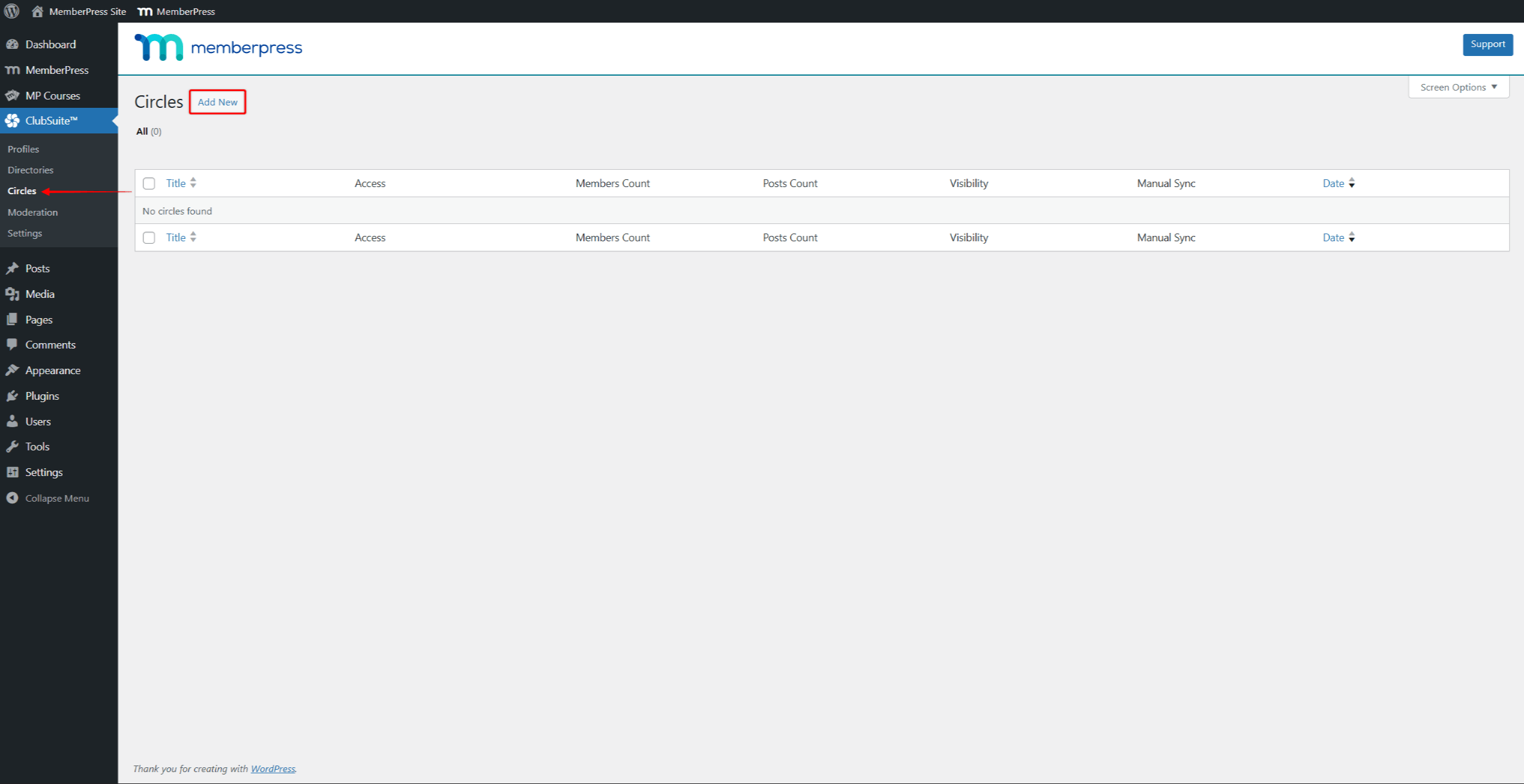
- Clique em Adicionar novo.
- Adicionar um Circle title that clearly explains the community's topic or purpose.
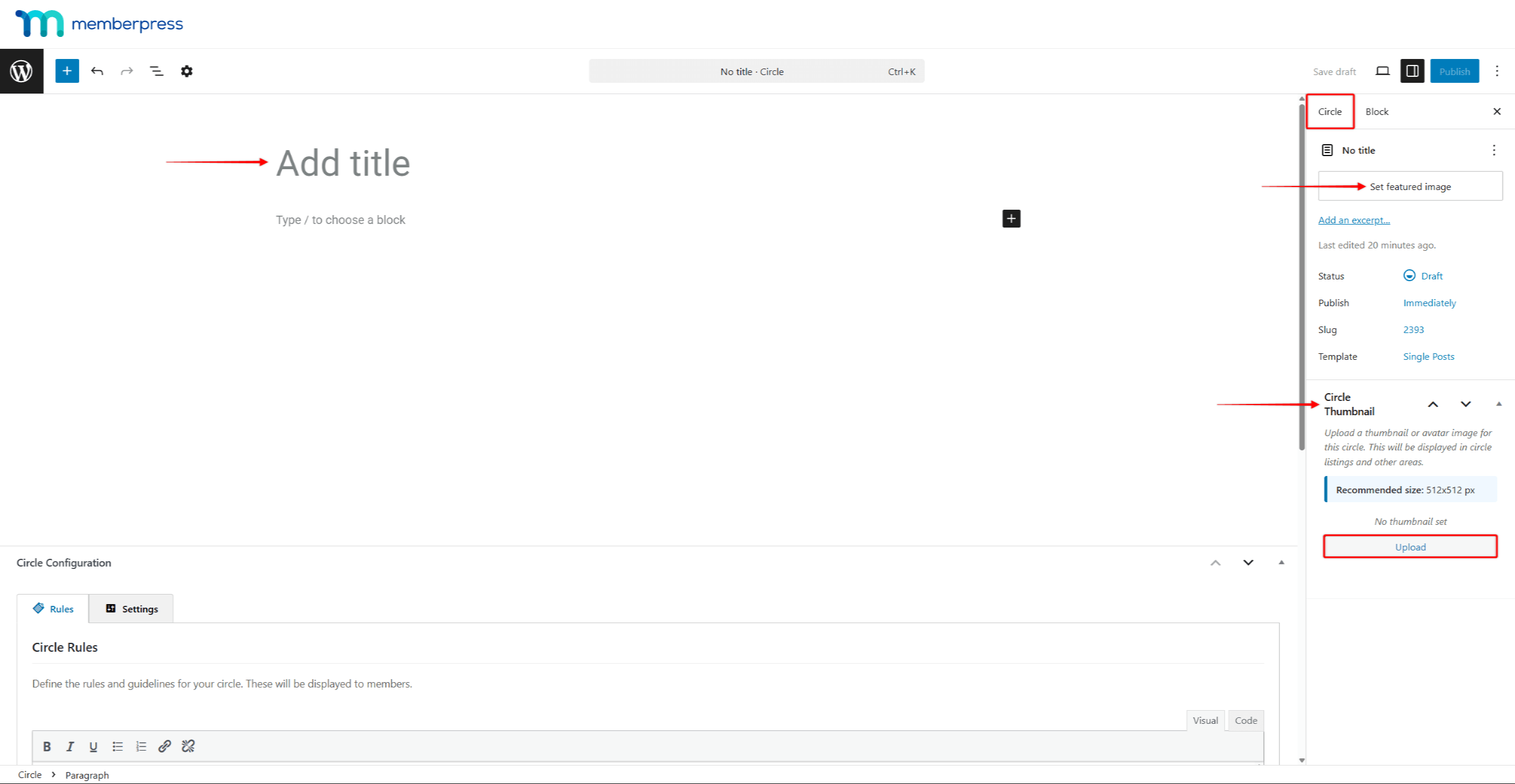
- On the right-side panel, click the Circle tab. Here, click the Definir imagem em destaque button, and choose the image you want to use as the Circle Cover Image.
- Além disso, na seção Circle tab, expand the Circle Thumbnail panel, and upload the thumbnail image for the circle.
- Role para baixo até a seção Circle Configuration panel. Click on the Regras tab to add the community rules. MemberPress will automatically add the default rules content, which you can use, modify, or replace with your custom rules.
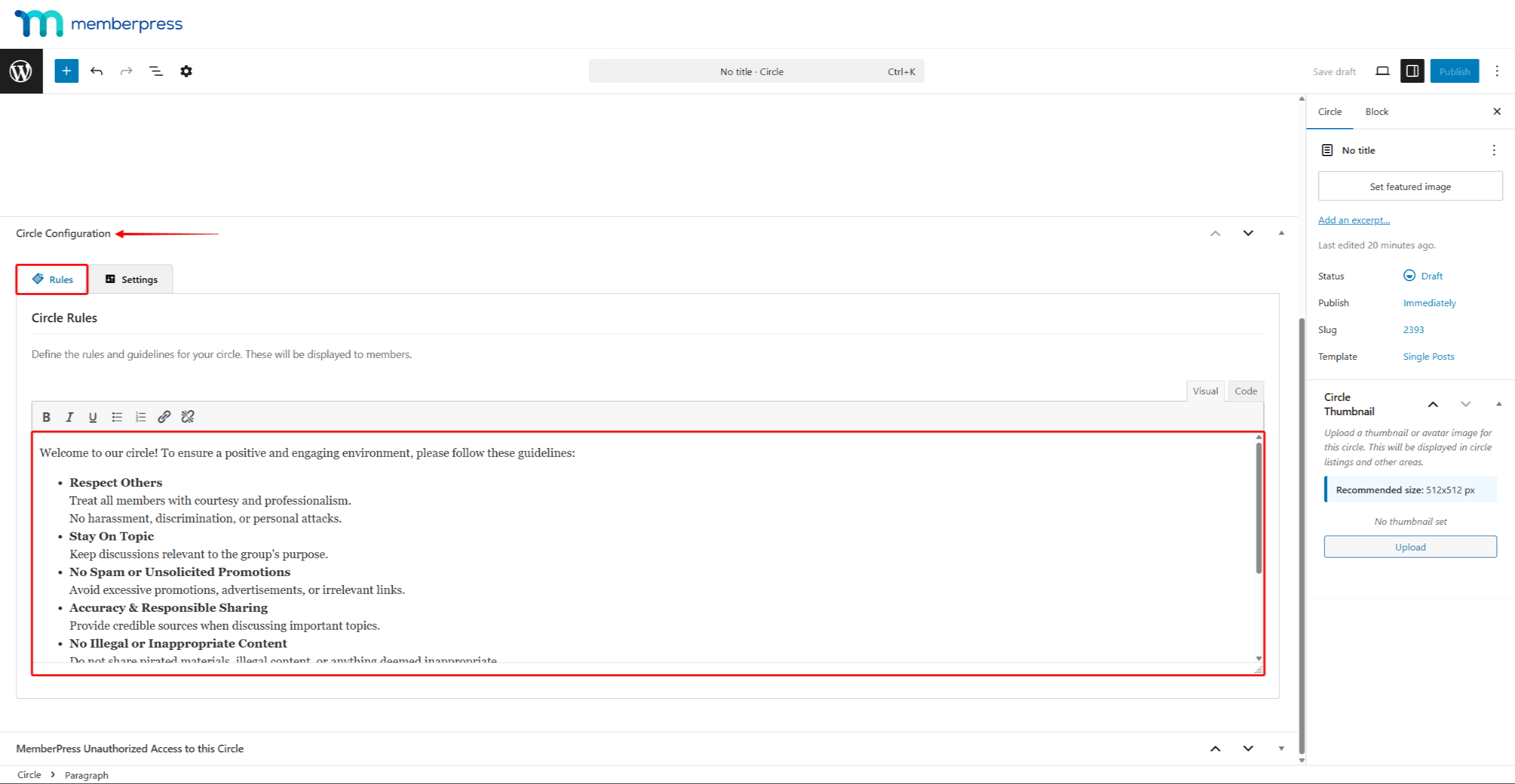
- Em seguida, clique no botão Configurações tab to configure Circle Settings:
- Permission Settings: define what actions are allowed for members and moderators;
- Visibility Settings: define who can see and join the circle;
- Automatic Assignment Settings: define how members should be added and removed from the circle.
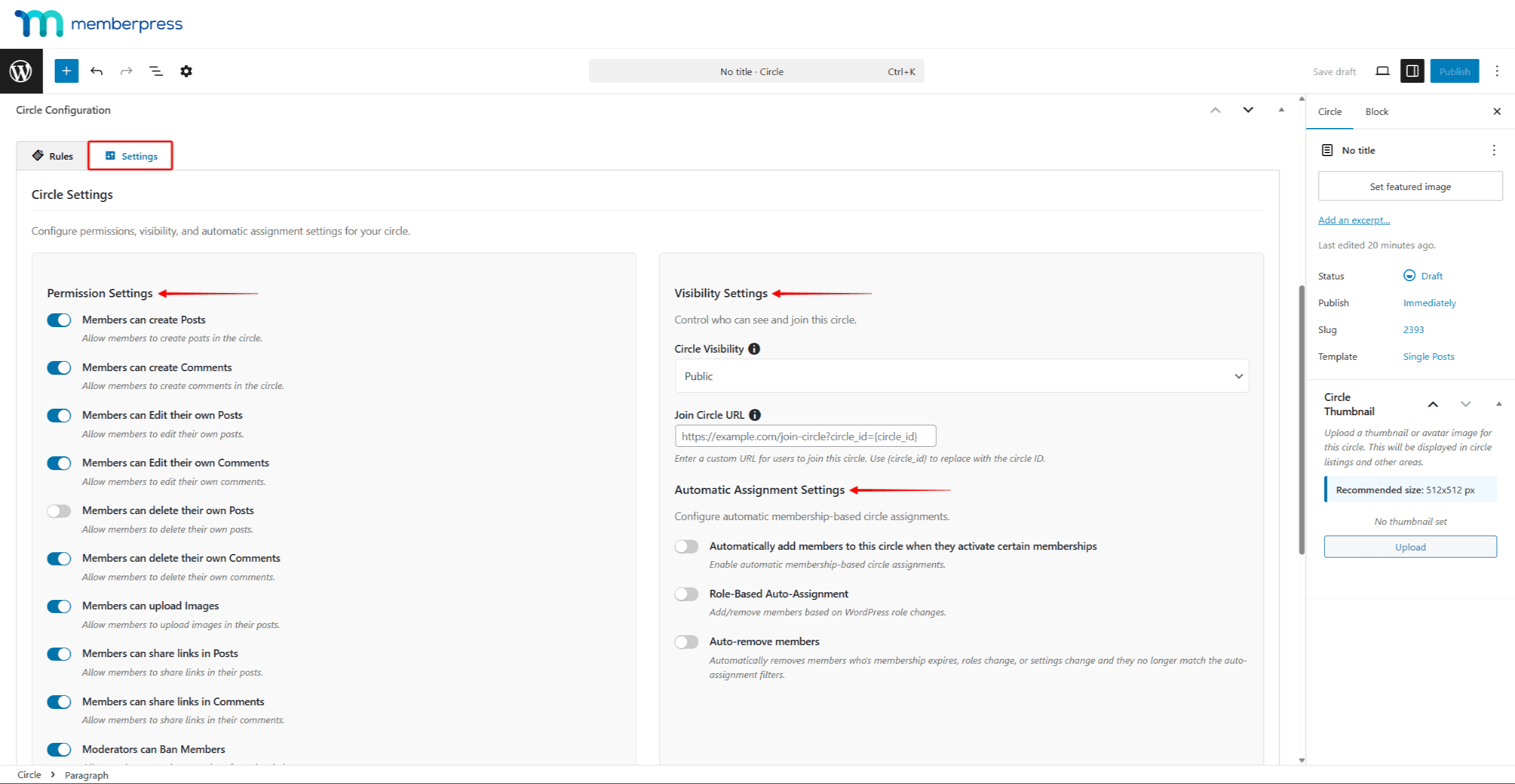
- Clique em Publicar to make the Circle available.
Configuring Circles
Each Circle can have different features enabled based on its type and purpose in the Circle Settings painel.
Permission Settings
Sob o Permission Settings, you can enable and disable the following permissions:
- Members can create Posts: Allow members to create posts in the circle.
- Members can create Comments: Allow members to create comments in the circle.
- Members can Edit their own Posts: Allow members to edit their own posts.
- Members can Edit their own Comments: Allow members to edit their own comments.
- Members can delete their own Posts: Allow members to delete their own posts.
- Members can delete their own Comments: Allow members to delete their own comments.
- Members can upload Images: Allow members to upload images in their posts.
- Members can share links in Posts: Allow members to share links in their posts.
- Members can share links in Comments: Allow members to share links in their comments.
- Moderators can Ban Members: Allow moderators to ban members from the circle.
- Moderators can Un-Ban Members: Allow moderators to un-ban members from the circle.
- Hide Banned Members Posts: Hide banned members posts in the circle.
- Hide Banned Members Comments: Hide banned members comments in the circle.
- Show Muted Member Notice at top of Circle: Display a notice at the top of the circle for muted members.
You can also modify a custom message under Muted Member Notice Message. This message will be displayed to muted members.
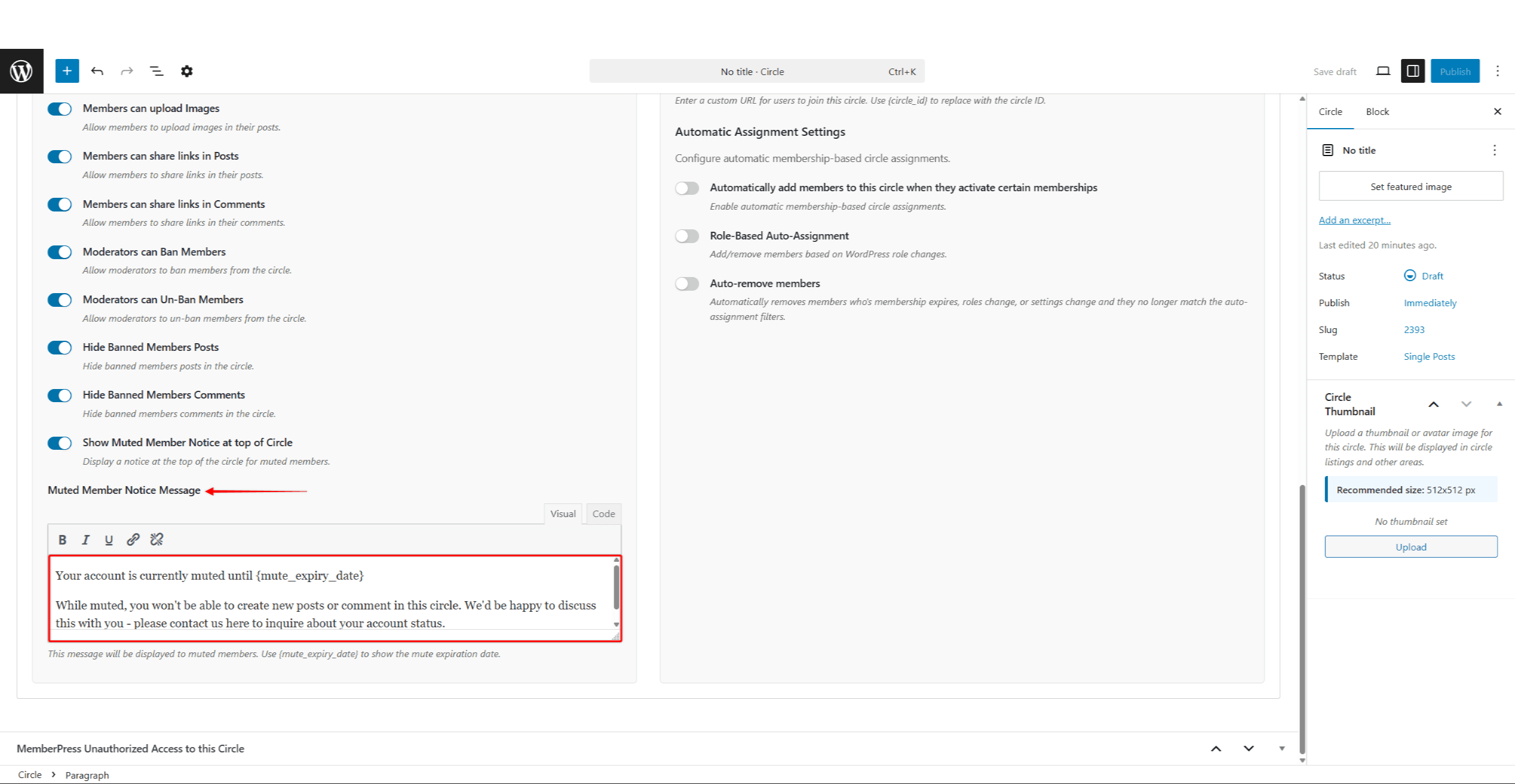
Visibility Settings
You can set the Circle Visibility to:
- Public: this option will make the Circle visible to all members and non-members;
- Logged In: this option will make the Circle visible to all logged-in users, including those without any active subscriptions;
- Members Only: this option will limit access to the Circle to users subscribed to one of the required memberships. If this option is selected, the additional option will be displayed, prompting you to choose one or more required memberships;
- Hidden: this option will hide the Circle, allowing access only to the existing members, preventing new members from joining.
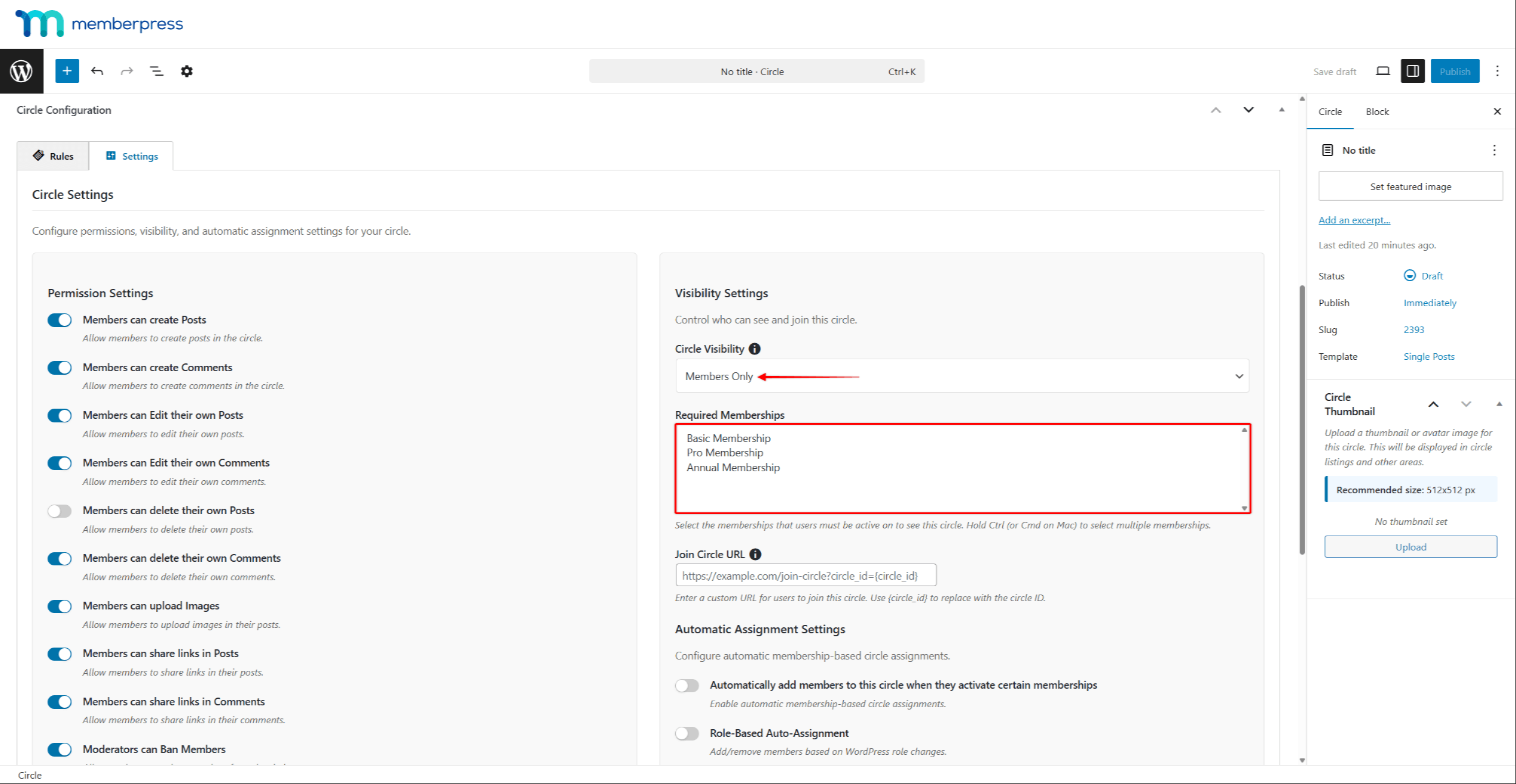
Here, you can also set the custom Join Circle URL specifically for this Circle.
Automatic Assignment Settings
Finally, you need to choose the automatic membership-based circle assignment method:
- Automatically add members to this circle when they activate certain memberships: this option adds users when they subscribe to the required membership.
- Role-Based Auto-Assignment: with this option, members will be added automatically to a circle based on the required user role. Também, if that user role is removed for the specific user, the user will be automatically removed from the circle.
Auto-remove members: Automatically removes members who no longer fulfill the auto-assignment requirements. This usually happens when a user’s membership expires or a user’s role changes. Furthermore, this can occur if the Circle settings change so that the user no longer matches the auto-assignment filters.
Best Practices for Circle Success
Create clear Circle purposes that attract the right members. Vague or overly broad Circles struggle to maintain focus and engagement. Use specific, searchable names to help members find relevant communities.
Maintain consistent moderation standards across all Circles. Document policies clearly and apply them fairly. Train moderators to handle situations uniformly while respecting Circle uniqueness.
Celebrate Circle achievements publicly. Share success stories in newsletters, feature active Circles on your homepage, and recognize exceptional Circle leaders. This recognition encourages continued participation and attracts new members.











